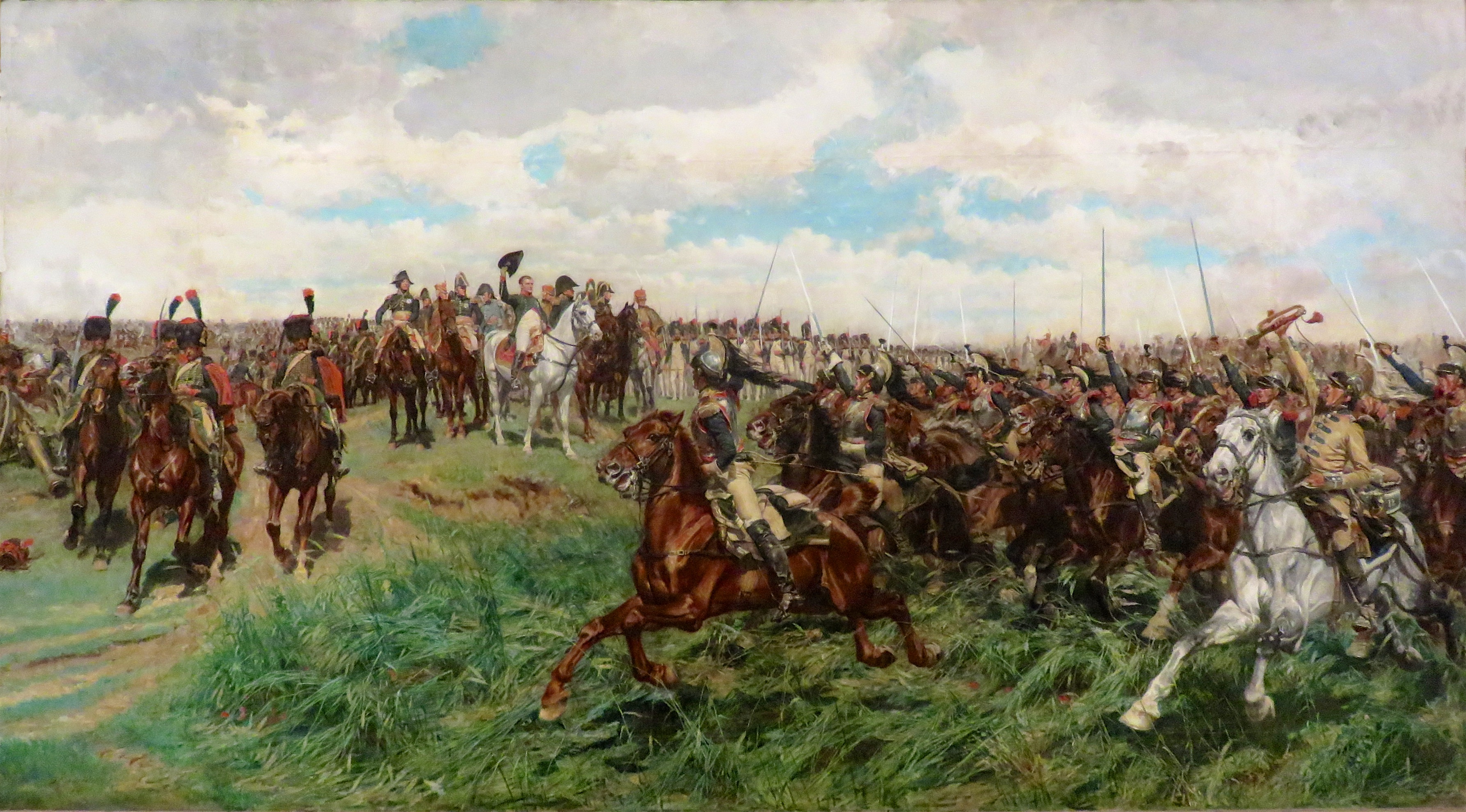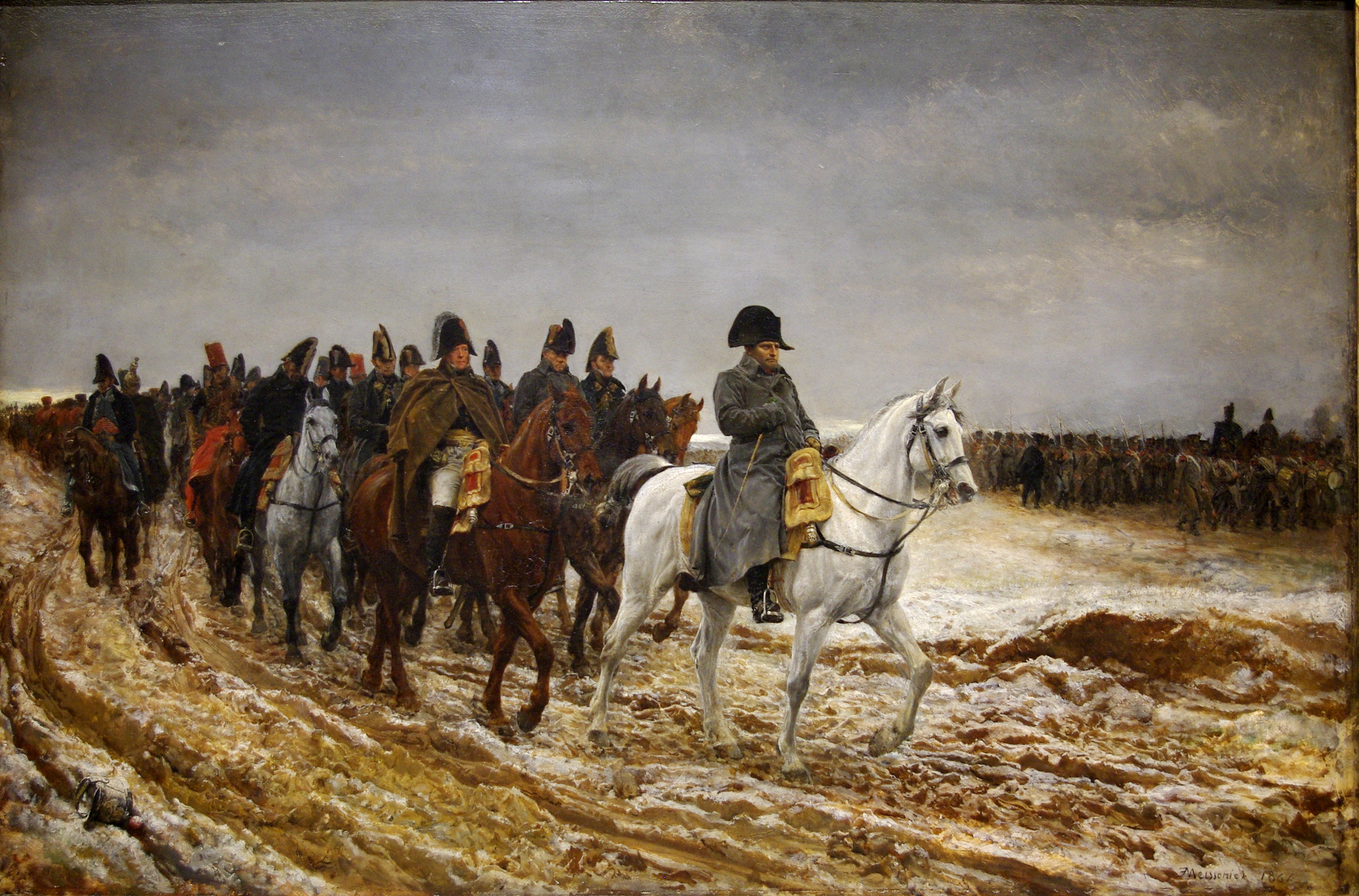In this election season when Americans are focused on winners and losers, I came across two relevant paintings of Napoleon Bonaparte. The first shows the Emperor in 1807 at the height of his power. The second shows the Emperor seven years later in the midst of failure.
Ernest Meissonier painted them during France’s Second Empire (1852 – 1870) when Napoleon III, the first Napoleon’s nephew, was on the throne. Naturally, interest in Napoleon I was at a peak. Meissonier planned a series of five paintings depicting the entire sweep of Napoleon’s reign, but only completed these two. Was he, like Napoleon, overly ambitious? Apparently so. This first work, which he called “1807, Friedland,” took fifteen years to complete. It measures 4 ½ feet high by 8 feet wide.

This beautiful, meticulous painting shows Napoleon reviewing the cavalry (cuirassiers) after his victory at the Battle of Friedland. On territory then part of East Prussia, now the isolated bit of Russia cradled between Lithuania and Poland, Napoleon’s forces vanquished the Prussian and Russian armies. At the end of the battle, the retreating Russians found themselves fighting with their backs to the Alle River. Thousands drowned trying to escape. Tens of thousands—over 40% of the soldiers on the field—were casualties.
This autumn, I discovered “1807, Friedland” at New York’s Metropolitan Museum of Art, where I took its photo. In truth, I’m generally more interested in Napoleonic art than battle details, no matter how grand a win or devastating a loss. So, a little more about the painting itself.
Intent on historical accuracy, Meissonier created over ninety studies for the men and horses, interviewed eye-witnesses, and collected military artifacts. Legend has it that he hired a carriage to ride alongside a galloping cuirassier so that he could sketch the former cavalry officer in action. In 1875, the painting sold sight-unseen to an American collector for an astonishing $60,000.
Meissonier’s second painting pivots from great victory to the road to ruin.

In this 20″x 30″ painting, titled “The Campaign of France, 1814,” Napoleon rides at the head of his troops who are fighting for the first time on French soil as overwhelming enemy forces converge on them. The colors are dark, the ground is muddy, and Napoleon himself, no longer surrounded by his generals, is isolated. In ironic juxtaposition to the Battle of Friedland, the French army had just lost the Battle of Leipzig where a river at their backs stymied their retreat and thousands drowned trying to escape.
Let’s hope our American empire doesn’t take such a precipitous fall. For all the election talk about what is wrong with the United States, I view my country as a great bastion of freedom, democracy and ingenuity. Now may be the time to employ some of Napoleon’s mother’s skepticism. When complimented on how well her son had done, she reportedly responded, “If only it lasts.” It’s our job as citizens to make sure that what’s good in our country endures and prospers.

Pingback: Finding Napoleon Bonaparte in Baltimore - Finding Napoleon